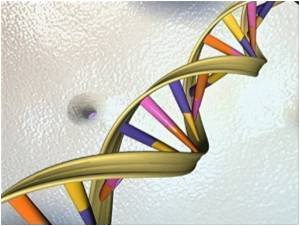
Medical researchers have high hopes for the knowledge they will gain from the massive effort to "map" the epigenome now under way under the umbrella of the Roadmap Epigenomics Project of the National Institutes of Health. The latest fruits of this effort appear in the Feb. 18 issue of Nature.
"Mapping the epigenome will be extraordinarily useful for people who want to study diseases," said Dr. David A Bennett, the Robert C. Borwell Professor of Neurological Sciences, and director of the Rush Alzheimer's Disease Center.
Cracking the epigenome's complicated codes will allow researchers to understand the a key part of the molecular basis of disease and eventually to control how genes change - to cure and hopefully even prevent many common diseases.
The epigenome presents an astonishing number of possibilities for gene expression, "all the different permutations and combinations," its complexity "orders and orders of magnitude" beyond that of the basic genome sequence, Bennett said.
If the Human Genome Project, which got under way in the late 1980s, provided a genetic "map" of human genome, then the Roadmap Epigenomics Project now under way will annotate that map.
"A map only becomes useful to the traveler when it's annotated. Where are the towns? Where are the villages? Where are the ports?" Bennett said.
The 111 reference human epigenomes set out in one of the Nature papers include "epigenetic signatures" associated with 58 complex traits. "The next step will be to map the epigenetic profiles of individuals to understand more about how they vary from person to person," according to the press release from the journal.
Advertisement
One of those studies featured Bennett, Dr. Philip De Jager, of Brigham and Women's Hospital in Boston, the Broad Institute and Harvard University in Cambridge, Mass., and other researchers. That team applied "systems biology" analysis to molecular data collected from 708 autopsied brains donated through the Religious Order Study and the Rush Memory and Aging Project, both based at Rush and funded by the National Institute on Aging.
Advertisement
In 2009, the NIH gave 20 grants to teams working on specific diseases as part of the Roadmap Epigenomics Project, including four grants to teams looking at diseases of the brain. Bennett's group received one of the grants.
The Religious Order Study and the Rush Memory and Aging Project provide "the perfect tissue" for this epigenomic research, said Bennett, who attended one of the first NIH workshops on the epigenome in 2008.
"We've been involved with this for diseases of the aging brain since the beginning," he said.
The epigenome uses two major techniques for allowing, or prohibiting, gene transcription. The first is methylation, which deploys chemical tags called "methyl groups" to negotiate between the DNA and a cell's protein producers as to how much expression will occur in that particular cell.
The second is "histone modification." If you think of the gene as a thread wound up on a spool, histone modifications "wind and unwind the thread so it can be read," Bennett said.
His team's recent study found methylation changes that may contribute to the pathology of Alzheimer's disease, including in the brains of people who were not symptomatic at the time of their deaths. They identified additional genes not identified by the genome sequence that were part of a "known AD susceptibility gene network."
Source-Newswise









